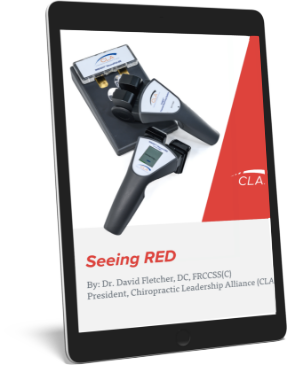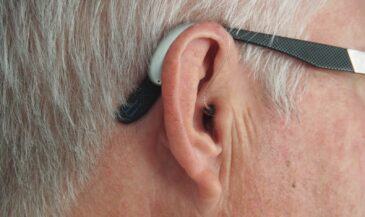By Dr. Christopher Kent
The scope of chiropractic is as broad as the scope of influence of the nervous system. Although many chiropractors and those they serve tend to focus on disorders associated with the physical body, it is obvious that abnormal nervous system function may also affect emotional and psychological health.
According to B.J. Palmer, “D.D. Palmer was the first man to discover that insanity was caused by displaced cervical vertebrae, that by replacing them the patient could be restored to normal condition.” [1] B.J. also described his expert testimony in a case where he stated, “If an atlas is subluxated it makes abnormal the functions of the brain” In answer to the question, “What is to be done in insanity?” he admonished his reader to “Go back to cause. Adjust that and return that brain to its normal capacity and capability.” [2]
Several inpatient mental health facilities were established, where chiropractic adjustments were the dominant clinical service provided. Two of these were located in Davenport. In 1922, the Chiropractic Psychopathic Sanitarium was established. The facility was later known as Forest Park Sanitarium. North Dakota Judge A. W. Ponath noted that at the North Dakota state mental hospital, the “cure and discharge rate” ranged from 1827%, compared to 65% at Forest Park. [3]
The second facility, Clear View Sanitarium, was established in 1926. In 1951, Clear View was acquired by the Palmer School of Chiropractic. Dr. W. Heath Quigley, who directed the sanitarium, described he clinical protocol: “Each day, each patient was examined with the neurocalometer (NCM). If the clinician interpreted the NCM to indicate nerve impingement, the patient was adjusted.” Quigley reported that the rooms were “sunny and bright,” and that meals included “large servings of fresh vegetables…from a garden.” [4]
Unfortunately, both institutions closed, (Forest Park in 1959 and Clear View in 1961) in large measure because of third party pay issues. Insurance companies often refused to pay the costs of care. Iowa statutes at the time did not provide for licensing specialized hospitals; only full service medical hospitals could be licensed. [5] Clear View was not licensed as a hospital, and functioned legally as a nursing home.
The 1970s saw a renewed interest in chiropractic care and mental health issues. In 1973, Dr. Herman S. Schwartz, a chiropractor, published a book titled “Mental Health and Chiropractic: A Multidisciplinary Approach.” [6] In 1949, Dr. Schwartz had published a preliminary report of 350 patients afflicted with a “nervous or mental disorder” and reported that the majority of them showed improvement under chiropractic care. [7] Dr. Schwartz was active in the ACA Council on Mental Health (formerly Council on Psychotherapy), which survived through the ’70s, but no longer exists.
In the 1980s, Dr. Quigley published an article describing a four decades period where “treatment of the mentally ill was a highly motivated discipline within the chiropractic profession.” [8] In 1988, Dr. Goff, an Ed.D., published a review of the theory and practice of “chiropractic treatment for mental illness.” [9]
Interest in this field continues. In a previous column, the author reviewed the role of chiropractic care in children with learning and behavioral impairments. [10] Blanks, Schuster and Dobson [11] published the results of a retrospective assessment of subluxationbased chiropractic care on selfrelated health, wellness and quality of life. This is, to my knowledge, the largest study of its kind ever undertaken regarding a chiropractic population. After surveying 2,818 respondents in 156 practices, a strong connection was found between persons receiving Network care and selfreported improvement in health, wellness and qualityoflife.
Genthner et al [12] recently reported on a series of 15 patients with a history of depression. The Beck Depression Inventory II was used to measure the baseline level of depression and any postcare changes following orthospinology care. A paired ttest demonstrated significant improvement in depression test scores.
Nearly 38 years ago, my chiropractor explained that everything we experience is processed through our nervous system. When our perception of the world is distorted by nerve interference, it compromises our ability to respond appropriately. He noted that in addition to damaging our physical health, it could result in impaired psychological and emotional function as well. Finally, he opined that when this happened to a significant number of people in a society, a sick society would result.
In response to my question, “So what do you do?” he answered, “I locate and correct the cause of that interference.” I got goose bumps then, and I’m getting them now. It became obvious at that point that I had to become a chiropractor, and change the world.
References
1. Palmer BJ: “History Repeats.” The Palmer School of Chiropractic. Davenport, IA. 1951. Quoting from The Chiropractor Vol. 1, No. 7, June 1905.
2. Palmer BJ: “The Science of Chiropractic.” Volume 2. The Palmer School of Chiropractic. Davenport, IA. 1920. P. 41.
3. http://www.thehealthwriter.net/newsletter.1.htm
4. Quigley WH: “Clear View Sanitarium Part 5.” Dynamic Chiropractic. April 11, 1990. Vol. 8, No. 8.
5. Quigley WH: “Clear View Sanitarium The final years.” Dynamic Chiropractic. June 19, 1992. Vol. 10, No. 13.
6. Schwartz HS: “Mental Health and chiropractic: A Multidisciplinary Approach.” Sessions Publishers. New York, 1973.
7. Schwartz, HS, “Preliminary analysis 350 mental patients’ records treated by chiropractors,” Journal of National Chiropractic Association (Nov. 1949), pp. 1215.
8. Quigley WH: “Pioneering mental health: institutional psychiatric care in chiropractic.” Chiropractic History 1983;3(1):6973.
9. Goff P: “Chiropractic treatment of mental illness: a review of theory and practice.” Research Forum 1988;4(1):410.
10. Kent C: “Children, ADD/ADHD, and chiropractic.” The Chiropractic Journal. August 2002.
http://www.worldchiropracticalliance.org/tcj/2002/aug/aug2002kent.htm
11. Blanks RHI, Schuster TL, Dobson M: “A retrospective assessment of Network care using a survey of selfreported health, wellness and quality of life.” Journal of Vertebral Subluxation Research 1997;1(4):15.
12. Genthner GC, Friedman HL, Studley CF: “Improvement in depression following reduction of upper cervical vertebral subluxation using orthospinology technique.” Journal of Vertebral Subluxation Research. November 7, 2005.






























































































































































